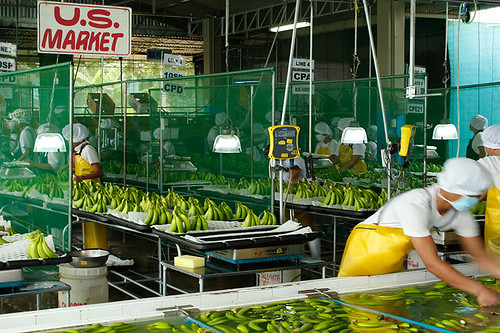
The U.S. Department of Agriculture continuously seeks opportunities for U.S. agricultural products and producers to expand access to overseas markets and contribute to a positive U.S. trade balance, in turn creating jobs and supporting economic growth. The past six years have represented the strongest period for American agricultural exports in the history of our country. In fiscal year 2014 American farmers and ranchers exported a record $152.5 billion of food and agricultural products to consumers worldwide.
To that end, I recently had the opportunity to visit the Philippines with APHIS employees and meet with U.S. Embassy personnel, Philippine government officials, and Philippine industry representatives. On my trip, I met with our Philippine counterparts at all levels and learned first-hand the value of outreach and relationship-building between APHIS colleagues stationed in Manila, Embassy colleagues, and locally employed staff. Philip Goldberg, U.S. Ambassador to the Philippines, who was very gracious with his time, acknowledged the close working relationship between APHIS personnel in Manila and their local plant and animal health counterparts and highlighted how resolutions of technical issues contribute to the overall strong bilateral partnership between the United States and the Philippines.
While there, I was able to experience directly the positive outcomes from ongoing collaboration between the United States and the Philippines. These achievements involved expanding access for U.S. vegetables, including potatoes, and the recent APHIS approval of imports of Philippine bananas into the United States, which was then extended to Guam and other U.S. territories in the Pacific.
During our meetings, we discussed recent successes and identified future market access opportunities that would benefit both our countries, including marketing U.S. blueberries and Christmas trees in the Philippines and tropical fruits from the Philippines in the United States.
The Philippines’ Bureau of Plant Inspection also provided us a comprehensive overview of quarantine inspection procedures at the Port of Manila and expressed interest in electronic certification technology to facilitate cargo inspection and clearance, a boon to exporters and importers alike. We visited the Mindanao Province to tour Philippine banana groves and learn about pest management procedures in the banana growing region. We also took a tour of seaport operations and packing procedures as Philippine bananas are prepared for export to the United States and other regional trading partners. We saw how safeguarding steps in their groves and packing facilities ensure plant pests do not arrive in banana shipments to the United States.
This trip was a valuable opportunity to view first-hand how an important U.S. trading partner implements best management practices that protect their domestic agriculture—practices that also serve to protect American agriculture, and agriculture around the world, when these partners engage in international trade.
The trip also helped me develop an even stronger appreciation for the tireless efforts of many that go into ensuring the protection of agriculture all over the world. No matter what part of the world, we and our trading partners are guided by the same tenants: promoting our countries’ agricultural products, protecting our agricultural resources from foreign pests and diseases, and facilitating trade.
I look forward to visiting with counterparts in other countries, building relationships and learning from one another how to enhance trade between nations.
